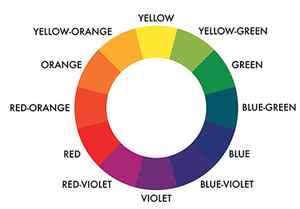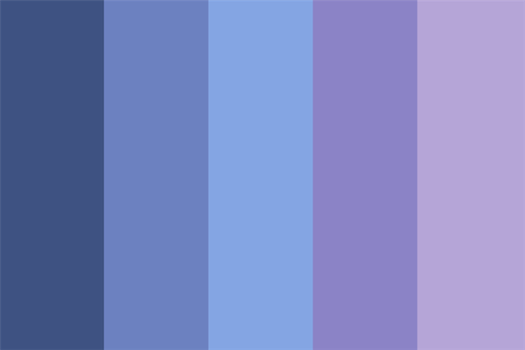1/8 tsp Cardinal Red + 1/8 tsp Tan Beige = Rose Quartz
How to mix blue and purple hair dye: everything you need to know before you do it
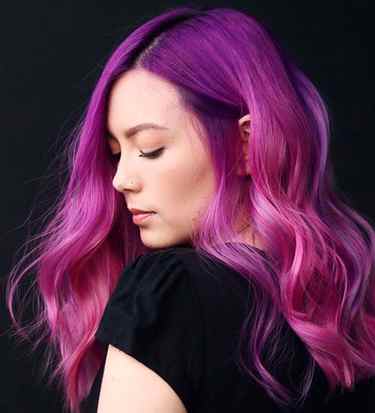
Before you decide to mix dyes, I would first recommend that you check with a bunch of different brands of dye to see if any of them have the color you’re looking for.
We often think that the color we like is unique, but brands like Manic Panic, Punky Color and Arctic Fox have a wide range of colors, including many different kinds of blues and purples.
So, let me ask you a question: is the color you’re looking for so unique that you can’t find it in any of the colors those brands offer?
If your answer is “yes,” then we can continue and make your own color.
I’ll tell you everything you need to know to mix purple and blue dye so you can get that special color you’re looking for.
- If you’re considering mixing blue and purple dye, then you’ll end up with a deeper purple.
- But you need to choose very carefully the blue dye you want to use, because that color will determine the intensity and the tonality of your purple. I’ll tell you about that soon.
- That’s why it’s a good idea to use semi-permanent dyes, which have a much wider variety of blue dyes.
Colors are magic and when you mix them, you can end up with new colors that are even more marvelous.
Let’s put your colorimetry skills to the test.
Do you know which colors you need to make purple?
That’s right! Red and blue.
But, purple’s depth or intensity changes, depending on how much blue or red it has.
If purple has more blue in it, then it will be deeper, and if it has more red, it will be more intense.
That’s why brands like Manic Panic, Arctic Fox, and Punky Color exist. They have different kinds of purples and blues, so you can find an intense purple, a blueish purple, a pinkish, blueish purple… and the list just keeps going.
But, what happens when none of those purples is exactly the color you were looking for?
You can make your own purple by mixing blue and purple dyes from any of these brands.
But, you have to be very careful when you’re making the mixture. That’s why, if you want to make a unique shade of blue and purple, don’t go away, because I’m going to tell you:
- What kind of dye you should use to mix purple and blue
- How to prepare a mixture of purple and blue
After this, all of your friends are going to want to know which purple dye you have in your hair.
Tabla de Contenidos
What kind of dye should you use to mix a blue and a purple color
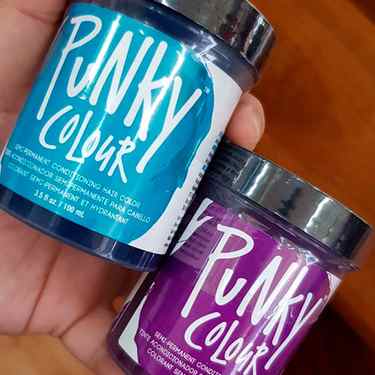
As you surely already know, there are two kinds of dyes: semi-permanent dyes and permanent dyes.
The most logical thing would be if you’re used to using permanent dyes, that you should use permanent dye to mix blue and purple.
But the problem is that there aren’t that many permanent dyes that come in bright, non-traditional colors, like blue and purple.
That’s why my recommendation is to choose semi-permanent dyes, since you’ll find a multitude of blue and purple shades to create your ideal color.
You can choose blues and purples by Manic Panic, that won’t damage your hair, or Punky Color dyes, that are ideal for damaged hair.
Besides the dye that you end up going for, the most important factor when it comes time to mix the blue and purple is to choose very carefully your blue dye.

Because that is what will determine the color you end up with.
- If you want a purple with blue tones, choose a medium blue
- If you want a bluish-purple, choose an electric blue
- If you want a deeper purple, go for a darker blue
As you can see, the more blue you use in the mixture, the deeper the purple you end up with will be.
Now that you know which blue you should choose to mix with the purple, let’s move on to the right way to mix the colors.
How to properly mix blue and purple dyes
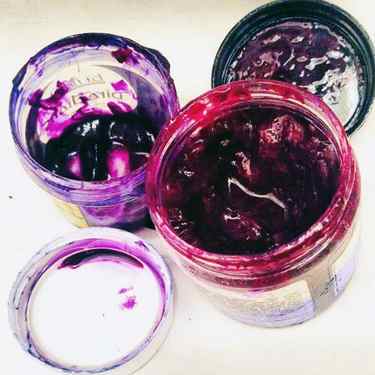
Now that you already have the dyes you need in the colors you want, it’s time to mix the dyes.
- The first thing you need to do is find a plastic container that you can make the mix in.
- The second thing you need to do is be patient because you’ll need to gradually add the blue to the purple. If you have a measuring spoon at hand, use it. If not, you can use any plastic spoon in your silverware set.
It’s very important to take note of how many spoons of blue dye you add to the purple so when it comes time to touch up your color, you’ll know the exact measurement of dye you need.
Do you want to know why?
I’ll tell you about something that happened to me not too long ago.
About a year ago, I painted the walls in my daughter’s room. I chose an apricot color, at least, that’s what I called it. They made that color for me in the store where I bought the paint, and since it was a unique color, they wrote down the proportions of colors they’d use to make it.
And it’s a good thing they did! Because when I had to touch up a few areas – you know how kids are – all I had to do was go to the store with the card with the color information and they were able to make me the same color.
Because it was that same color, you can’t even tell where I had to touch up the color.
It’s the same when you write down exactly how much blue you mixed with purple. You’ll be able to replicate the color and your touch-ups won’t even be noticeable.
Going back to the blue and purple mix, start by adding a set amount of blue and mixing until you see the result.
- If you like it, use it on your wet hair.
- If you don’t like it yet, keep adding a blue spoon by spoon until you get the purple color you want.
Why do I recommend adding the blue little by little?
Because mixing dyes isn’t easy. Us professional hair colorist spends a lot of time studying to get it right. And if you mix all the dye all at once, and you aren’t happy with the color you get, there isn’t much room to go back.
You’d have to buy a new dye and start all over.
If you gradually mix the colors, you’ll be able to see the subtle changes in the new color you’re creating and decide when the mix is ready, because it’ll be the color you’re looking for.
Once you have the new color you wanted, you’re onto the easy part: using the dye on your hair. All you have to do is follow a few simple steps.
- Wet your hair
- Use the dye on your hair from root to end
- Let it sit for 30-40 minutes
- Rinse and dry
Your color will look just like new for at least two weeks, after which time, you’ll need to touch up the color.
If you want to keep the color as bright as it was when you first dyed it for longer, Punky Color, for example, has a line of shampoos for maintaining color longer.
What Do You Get When You Mix Blue and Purple?
Mixing blue and purple will still give you shades of purple. But these shades will be different in intensity. Purple comes from mixing blue with red.
So, if you add more blue, your purple shade will be more on the darker side. Consequently, if you add more red, your purple shade will be lighter and more pinkish. So, it all depends on the final result you want to achieve.
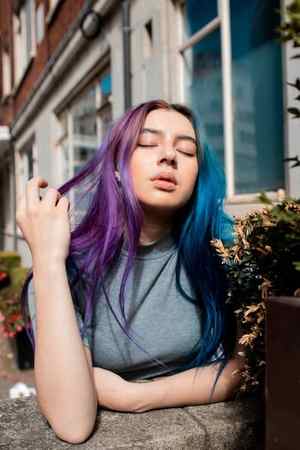
How to Mix Blue and Purple Hair Dye?
Before you start mixing your purple dye with your blue dye you will have to decide on which type of dye to purchase. There are semi-permanent dyes and permanent dyes.
When it comes to uncommon shades such as blue and purple, you are better going for a semi-permanent dye. The permanent ones don’t come in such a wide range of colors. So, if you have your mindset on mixing blue and purple dye here are the steps that you should follow for great results.
Find a plastic container to do your mix
Choose your mix container wisely as it might get stains on it. Sometimes, hair dye is hard to remove from certain surfaces. Because of this reason, you should go for a container that you don’t intend to lose for anything else other than mixing your hair dyes.
Add the blue to the purple
You will have to pour the purple dye in your mix bowl and gradually add the blue. You might not want equal quantities of these colors so add the blue one spoon at a time.
The more blue you add, the deeper and more intense the purple will be. Blue tends to give the purple shade a darker tone as well so it is important to not add too much.
Check your color as you add the blue
With each spoon of blue, you add to your purple dye, you should see a difference in the color tone. By keeping an eye on this, you will know when to stop adding the blue.
If you are still thinking to mix all your blue dye with your purple dye all at once, you should know you take a big risk. You might not end up with the shade you were hoping for and you will have to invest in new hair dyes.
Can Blue Hair Dye Go Over Purple?
Let’s say your hair is blue already and you are thinking about adding purple over it. This is an option but you have to be ready for the results. You might not get the shade you expect by doing that.
Keep in mind that the more intense your blue shade is, the darker your purple hair will become.
However, the purple will stay purple even if you cover it with a blue dye. If you want to get a darker shade of purple than you already have on, dying your hair with blue color might give you just that.
There are many shades of blue on the market, though, and it can be difficult to decide which one will go for your hair. It all depends on the final shade you want to obtain.
If you just want to intensify your purple with one tone you can choose a light shade of blue. If you want to darken it with two tones or more, choose a medium or darker blue.
Mix New Dye Colours
You can change an original Tintex package colour just by adding another dye (example: one 55g package of brilliant yellow + one 55g package of kelly green makes a bright green).
- 2017 Greenery This yellow green looks similar to Tintex Kelly Green. so you could use Kelly green alone or try mixing Brilliant Yellow + Kelly Green or Forest Green could be mixed with Brilliant Yellow for a deeper greenery theme colour.
Use Kelly Green alone or mix Kelly Green + Brilliant Yellow = Greenery
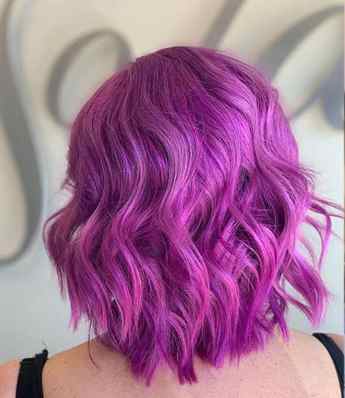

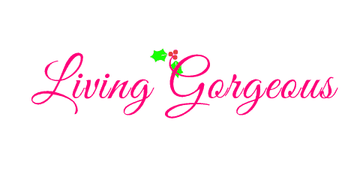
- Mix different dyes together to change the original colour (example: 100% cotton terry fabric dyed with a colour formula of 2 tsp scarlet red + 1 tsp royal blue + 1 tsp purple + 1 cup of hot water to make shocking pink).
Scarlet Red + Royal Blue + Purple = Shocking Pink
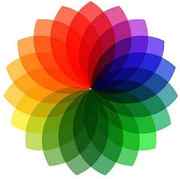
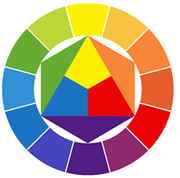
- Adding more of one dye than the other will change the colour (example: 100% cotton terry fabric is dyed midnight blue and a blue green sample is made with 1 Tbsp midnight blue + 1 1/4 tsp kelly green).
Midnight Blue + Kelly Green = Blue Green
- Create classic neutrals like Marsala(example: 100% cotton terry is dyed a mixture of 2 tsp brown, 2 tsp scarlet red, and 1/4 tsp charcoal grey with hot water). Adjust the colour intensity to suit tour taste by changing the suggested amount of dye or substituting another dye in same colour family like dark brown, tan beige, beige, cardinal red or black.
Brown + Scarlet Red + Charcoal Grey = Marsala
The Dye Colour Wheel
If you are dyeing your fabric a similar or darker colour you don’t always have to lighten before. You can get new colours by over-dyeing (example: red fabric turns purple if you dye it blue without lightening the colour before). See how the colours relate on the colour wheel:
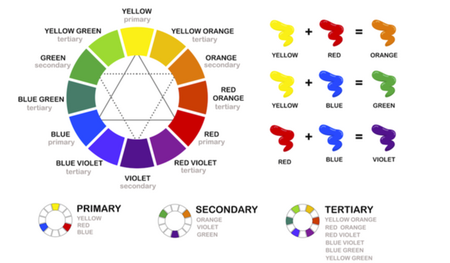
Basic Colour Theory For Dyeing:
Primary Colours: Red, Yellow & Blue combine to make all other colours.
Secondary Colours mix two primary colours (Red, Yellow or Blue) together.
Purple *called Violet in colour theory = (Red + Blue)
Orange = (Red + Yellow)
Green = (Yellow + Blue)
Tertiary Colours: mix adjacent primary and secondary together
Red Violet = (Red + Purple)
Red Orange = (Red + Orange)
Yellow Orange = (Yellow + Orange)
Yellow Green = (Yellow + Green)
Blue Green = (Blue + Green)
Blue Violet = (Blue + Purple)
Complementary Colours are opposite on the colour wheel ( Orange & Blue, Yellow & Purple and Red & Green).
Split Complementary Colour: Choose two colours on either side of a complementary colour (for example: Yellow, Blue Violet & Red Violet).
Analogous: side by side on the colour wheel (Red, Red Orange & Orange).
Monochromatic: different shades of the same colour extended using tints & tones
Helpful Tintex Links
- Tintex Product FAQ
- Dyeing Method FAQ
- Dyeing Problem FAQ
- Tintex Shipping & Stores FAQ
- Fabric Dyeing Tips
- Product Instructions

